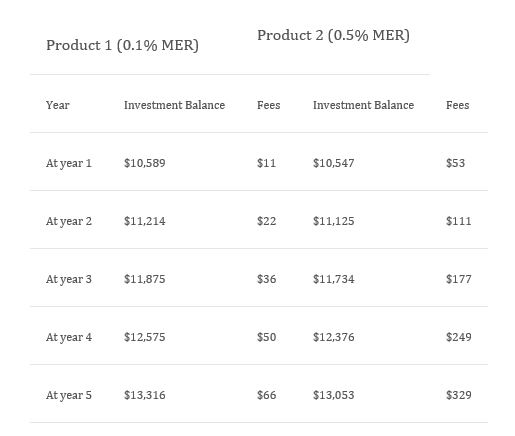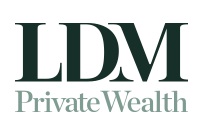You can’t control what happens on financial markets. But you can control one factor to improve your returns.
When it comes to investing, there are things you can never control and things that you can.
You can’t control what happens on financial markets on a day-to-day basis or the market returns from your specific investments.
But you can control one of the most important things of all that ultimately affects your returns – the costs that you pay to invest.
Costs are a factor that many investors overlook.
“Investors need to understand not only the magic of compounding long-term returns, but the tyranny of compounding costs; costs that ultimately overwhelm that magic,” noted Vanguard founder John C. Bogle in his bestselling 2012 book The clash of the Cultures: Investment vs. Speculation.
In short, every dollar that you pay in costs is a dollar out of your investment return. Or, put the other way, lower investment costs mean more money will end up in your pocket over time.
How costs add up
When choosing any professionally managed investment product, it’s very important to be aware of the costs you’re being charged.
Higher costs on investment products don’t add up to better returns. It’s the opposite in fact. Over time, higher-cost products will give you lower returns because they’re taking away more cash from you.
Management fees are charged irrespective of the investment returns a product achieves and are deducted from your total investment return.
Product costs are usually referred to as the management expense ratio, or MER, and must be disclosed in a product disclosure statement and periodic statements.
A product’s MER includes management fees and other expenses such as transaction charges, account fees and other operating costs, and is normally shown as a percentage of every dollar invested.
For example, for a managed fund product with an annual MER of 0.1%, the base cost for every $10,000 invested is $10.
Compare that with a managed fund with a MER of 0.5%. The cost on the same amount invested is five times more – $50 a year.
Some investment products currently in the Australian market have MERs above 3% a year. A high percentage charge fees above 1.5% a year.
Keep in mind that your total cost of investing based on a product’s MER will compound as your investment grows over time.
Again, using a $10,000 example and a five-year investment period, a managed fund product with a MER of 0.1% cent that achieves investment earnings of 6% a year would end up costing $66 in fees. At a 0.5% MER, your costs would be $329.
Fees increase as your investment value increases, reducing your investment balance over time.
Here’s how those calculations would look over the five years.

Source: Vanguard
See how, because of its lower fees, the investment balance on Product 1 after five years is more than $260 higher than that of Product 2.
On a 3% MER, the charges on a $10,000 investment over five years (also based on a 6% annual return) would be more than $1,800.
You should also be aware that some investment products charge performance fees on top of their standard management fees.
Products with performance fees charge them if they generate a positive return over a certain percentage level. Performance fees can be 20% of any excess profits that are made, or even higher in some cases.
Attitudes and approaches to investing
Vanguard surveyed more than 1,000 Australians aged over 18 on their attitudes and approaches to investing.
Asked whether they consider costs in their investment choices, 61% said they do each time while 29% said only sometimes. 10% said they never consider costs.
It’s Vanguard’s long held view that planning, discipline, keeping costs low and maintaining a long-term perspective are the key things that give investors their best chance for success.
While fees on investment products can’t be totally avoided, you can control which products you choose to invest in.
Do your research and, as part of that, look for comparable products that charge lower fees than others.
It’s important to compare apples with apples to ensure you’re getting the same investment coverage.
A few percentage points in costs may not seem like a lot.
But, on larger investments amounts and over longer time periods, those extra costs will really start to add up and reduce your investment returns.
Source: Vanguard November 2023
This article has been reprinted with the permission of Vanguard Investments Australia Ltd. Copyright Smart Investing™
Vanguard Investments Australia Ltd (ABN 72 072 881 086 / AFS Licence 227263) is the product issuer. We have not taken yours and your clients’ circumstances into account when preparing this material so it may not be applicable to the particular situation you are considering. You should consider your circumstances and our Product Disclosure Statement (PDS) or Prospectus before making any investment decision. You can access our PDS or Prospectus online or by calling us. This material was prepared in good faith and we accept no liability for any errors or omissions. Past performance is not an indication of future performance.
© 2023 Vanguard Investments Australia Ltd. All rights reserved.
Important:
Any information provided by the author detailed above is separate and external to our business and our Licensee. Neither our business nor our Licensee takes any responsibility for any action or any service provided by the author. Any links have been provided with permission for information purposes only and will take you to external websites, which are not connected to our company in any way. Note: Our company does not endorse and is not responsible for the accuracy of the contents/information contained within the linked site(s) accessible from this page.



